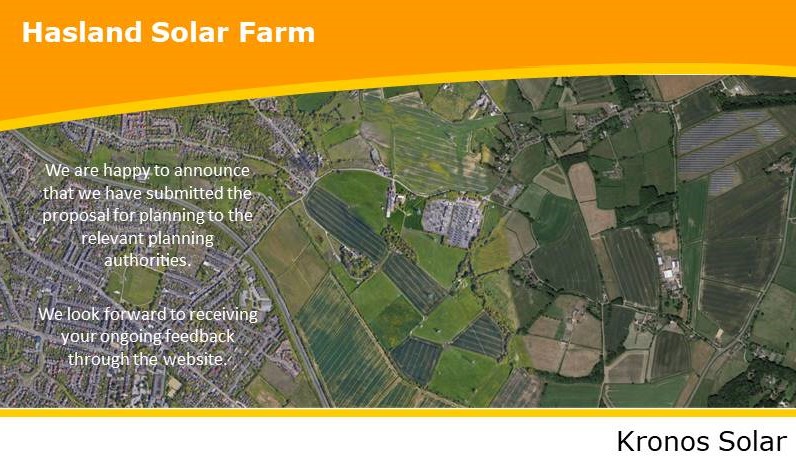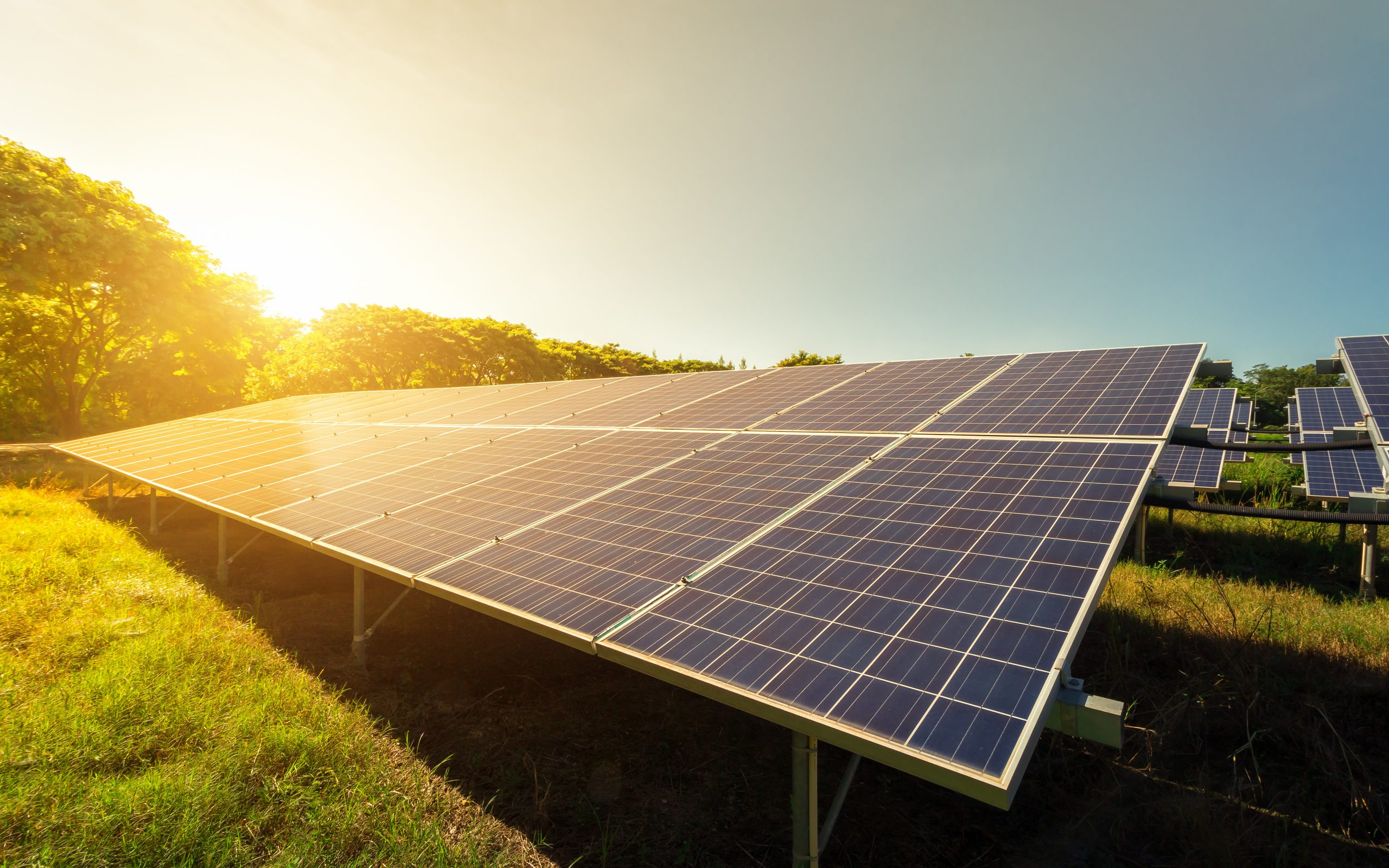Hasland Solar Farm: Site Assessment and Design
The solar farm will be developed close to the Chesterfield Substation, across the A617 from the Hasland suburbs. Following detailed technical analyses, this land allows us to build a project with the following technical characteristics:
- Construction area: approx. 168 acres
- Peak capacity: 49.9 Megawatt
- Clean energy supply for approximately 11,500 households.
- Avoidance of 16,000 tonnes of CO2 per year.
Layout of the park

Landscape integration
The starting point of the landscape integration plan is the preservation and strengthening of the existing landscape structures in the area. The following measures, among others, can be taken as part of the landscape integration plan:
- Retention of hedgerows and trees, as well as planting new ones along selected boundaries of the site for additional screening;
- Installation of a deer fence to distinguish the boundaries of the site, which has a min. height of 25cm to allow for small animals to pass underneath; and
- Enhancement of retained grassland around the solar panel infrastructure through over-seeding.
The reinforcement and planting of hedges offers many opportunities for local fauna including birds and insects, such as shelter and foraging areas. The fencing is necessary to prevent theft and destruction of the solar panels as much as possible and is a requirement of the solar park’s insurance company.
Example of deer fence

Agricultural Land Classification
The entire site has been assessed as Sub-Grade 3b and 4 agricultural land. This means it is not “best and most valuable land”, in other words, from a food production perspective, it is sub-optimal. Farmers on land like this have to work the land very hard using large amounts of fertilizers, herbicides and other chemicals. This is neither economically sustainable nor environmentally sustainable. There will always be a conflict between food security and energy security; this is why we at Kronos Solar avoid using “best and most valuable land”, wherever possible.
Cultural Heritage and Archaeology
There are no listed buildings or scheduled ancient monuments located within the site. And there are no Registered Parks and Gardens, Registered Historic Landscapes, or Conservation Areas located within or immediately surrounding the site. It has been considered that there could be no effect on the remaining listed buildings that are present in the wider locality. It is also expected that most archaeological deposits in the area will have been removed through the open cast mining that used to be present on the site.
Highways and Access
Access to the site is provided by the existing private road that serves the existing farm, accessed from Calow Ln. Additional construction access is available from B6425.
Flood Risk
The site is crossed by Calow Brook which causes very mild flooding. All modules and electrical infrastructure will be placed on Flood Risk Zone 1 areas, where the risk is at its lowest.
Aerial view of the location of the site

The following are two photomontages of the proposal showing the current view and the view on the first year after installation, when vegetation has not yet grown. This first viewpoint is south of the site, from Hassocky Ln::


This viewpoint is north of the site, from a footpath that crosses Calow Ln:


Ecology integration
The ecological considerations go hand in hand with the landscape mitigation proposals and include:
- Sensitive management of the retained hedges and trees for the benefit of the wildlife including targeted bolster planting;
- Conservation of trees of high value;
- Grassland management through an appropriate light grazing regime, such as sheep, and sensitive hay management; and
- Provision of bat roosting and bird nesting boxes on suitable retained trees.
Finally, during construction, the Calow Brook will be safeguarded and retained to avoid any negative impact on the environment and it will remain unaffected when the project becomes operational.
Land use combinations include grazing sheep and hay, co-location with wind energy and, in some cases, honey bees. Below are some examples.



